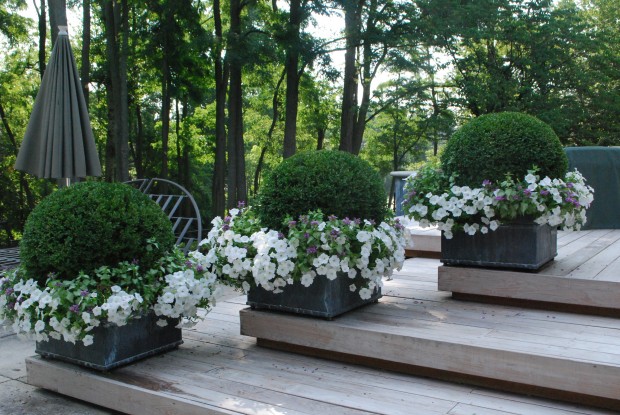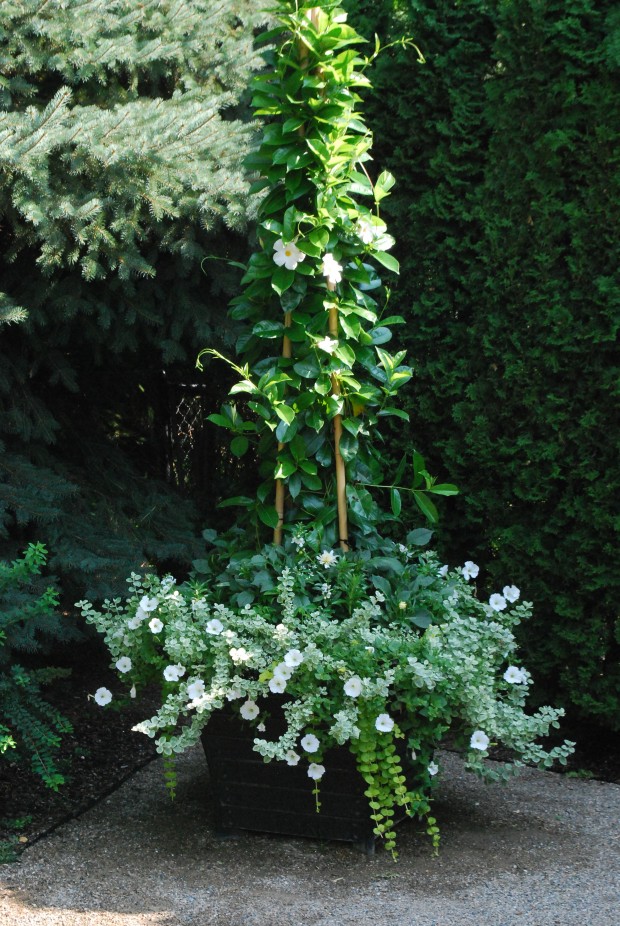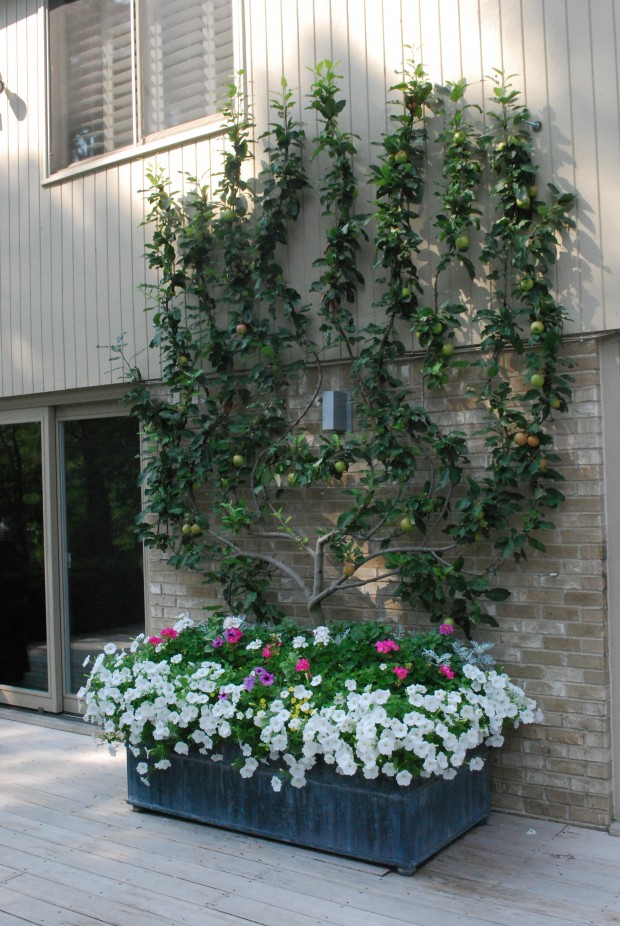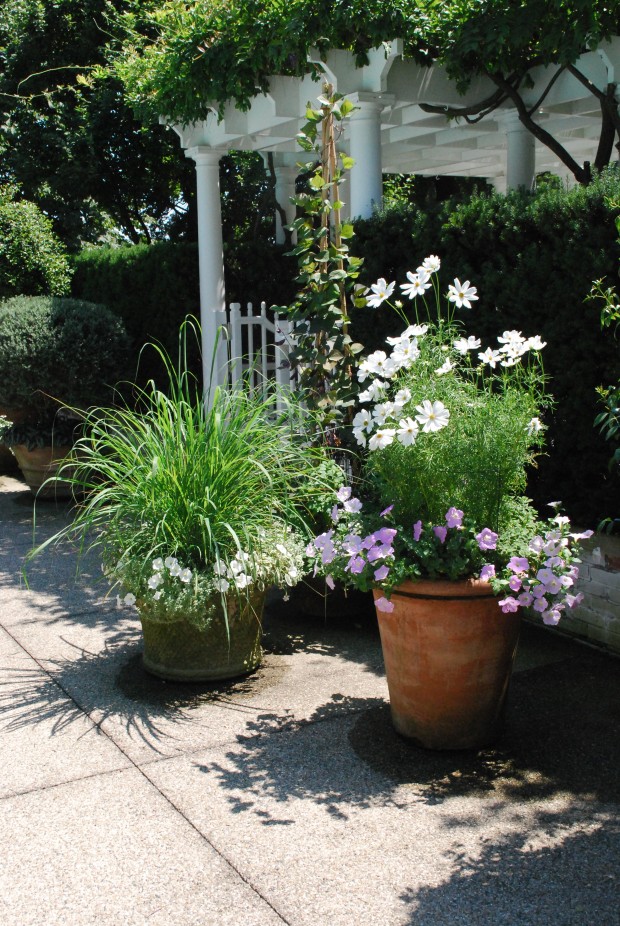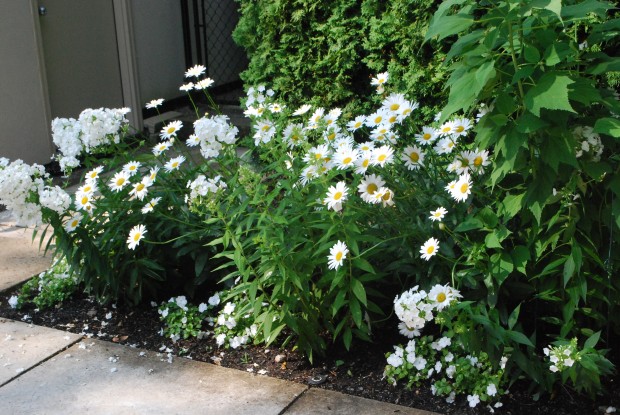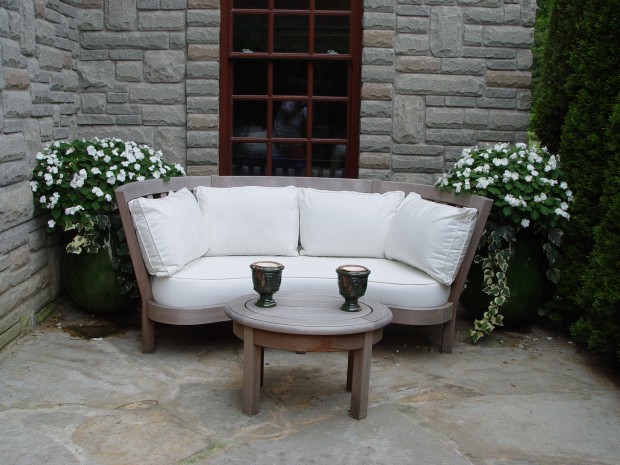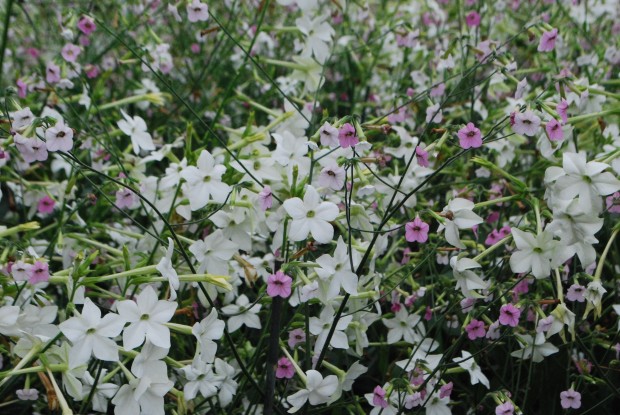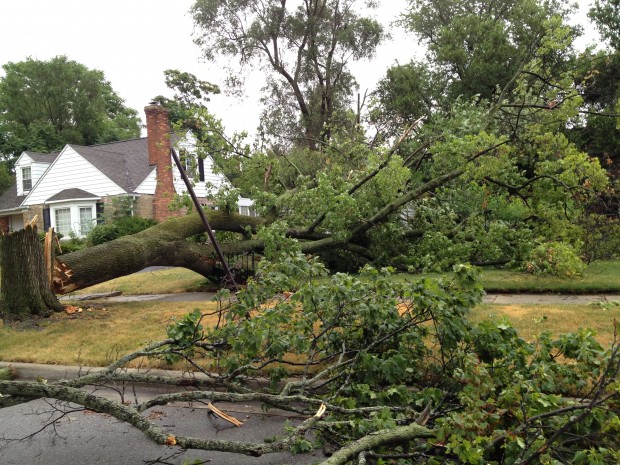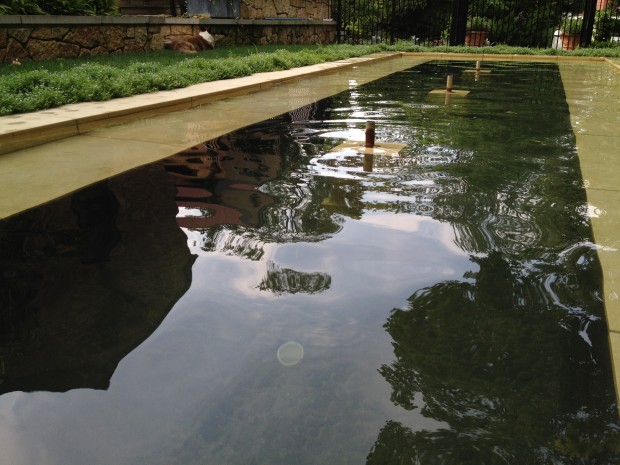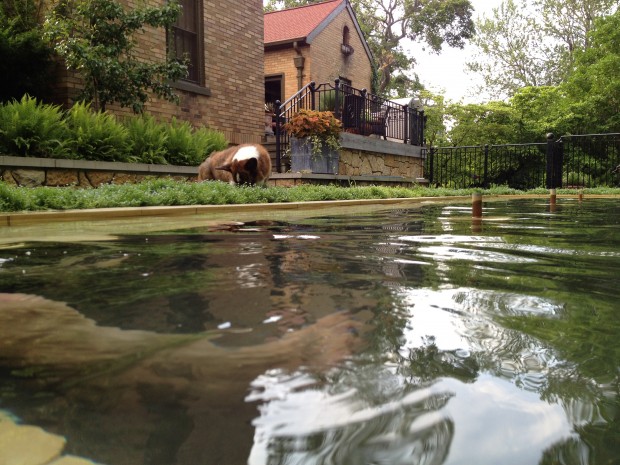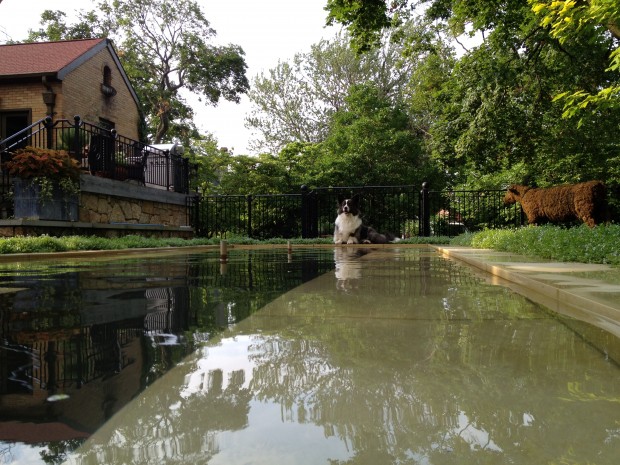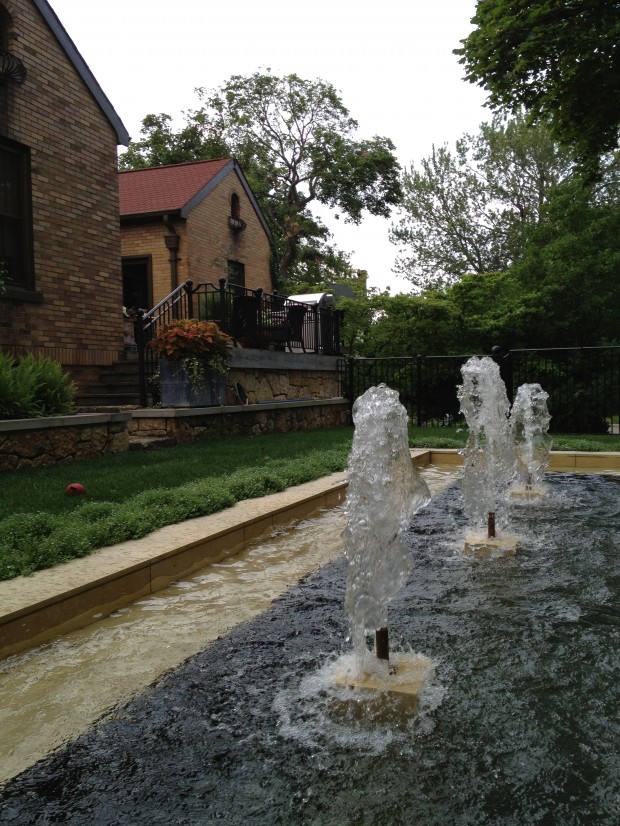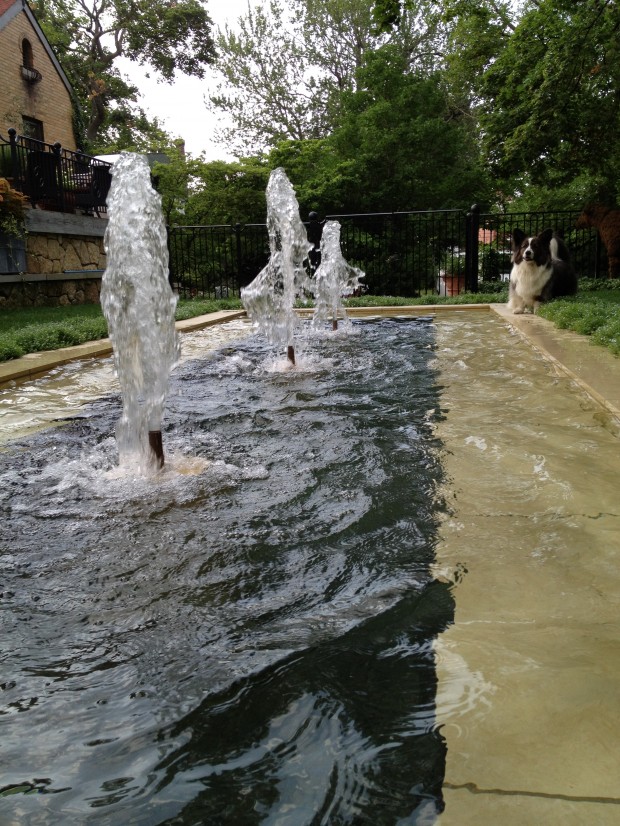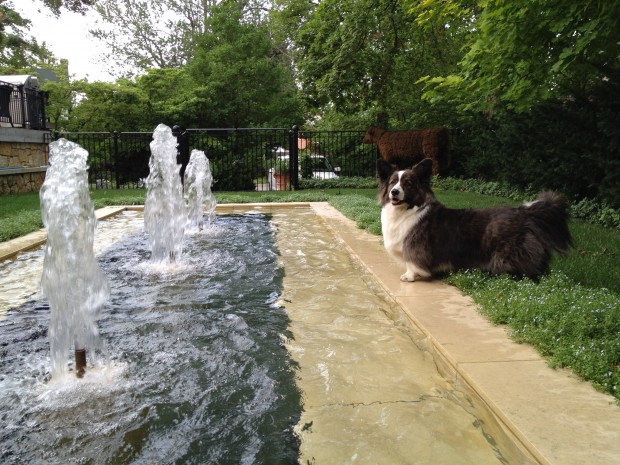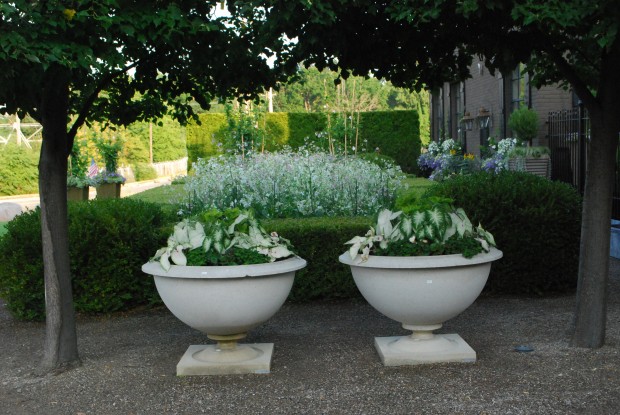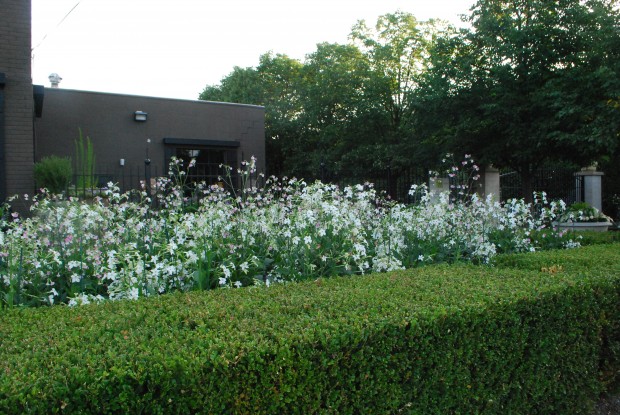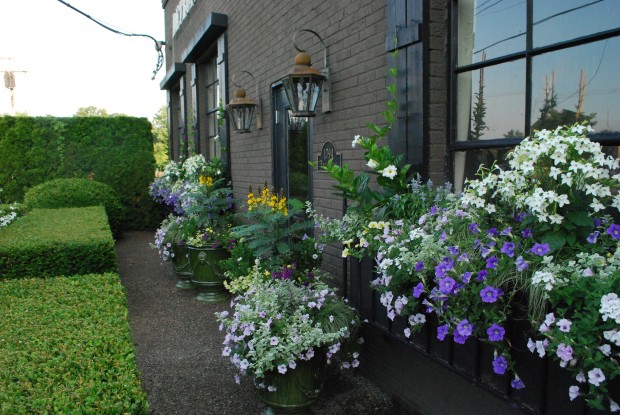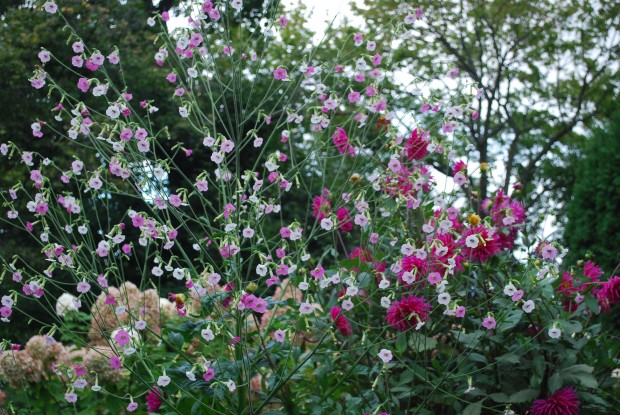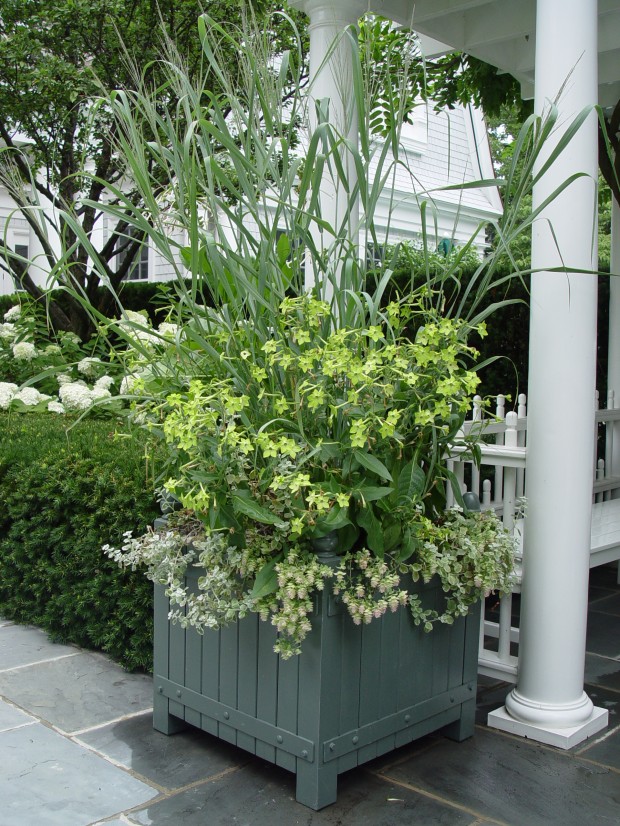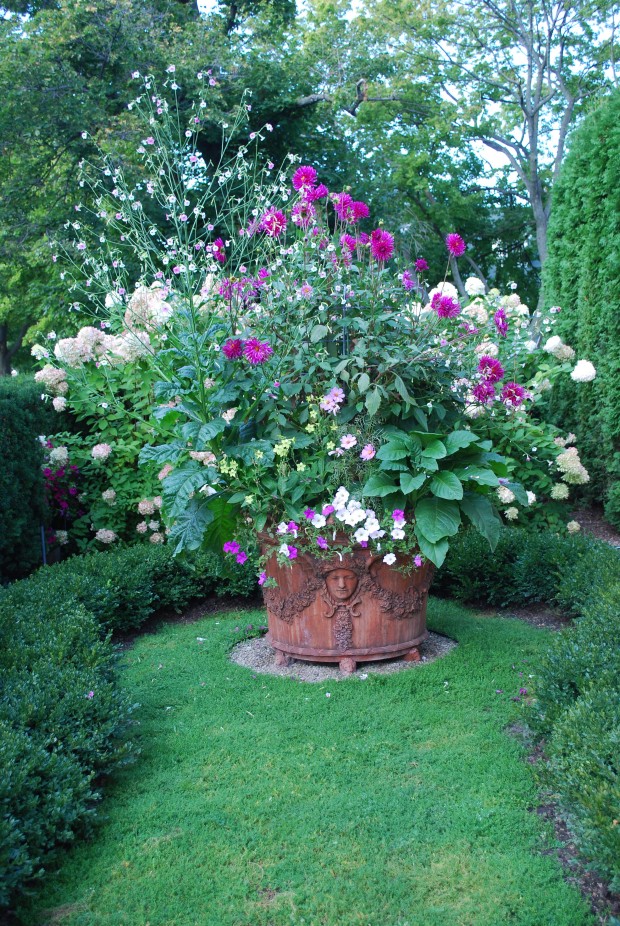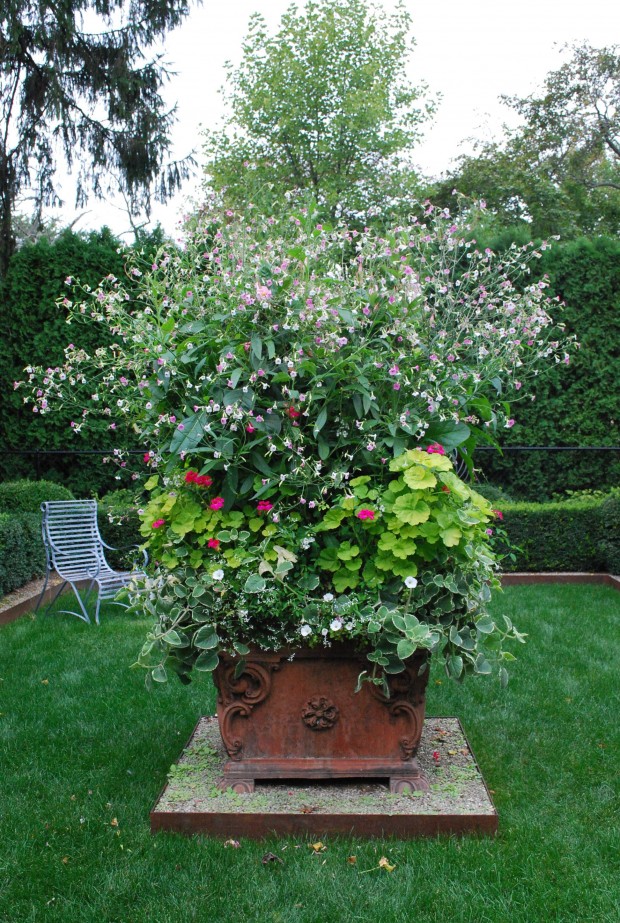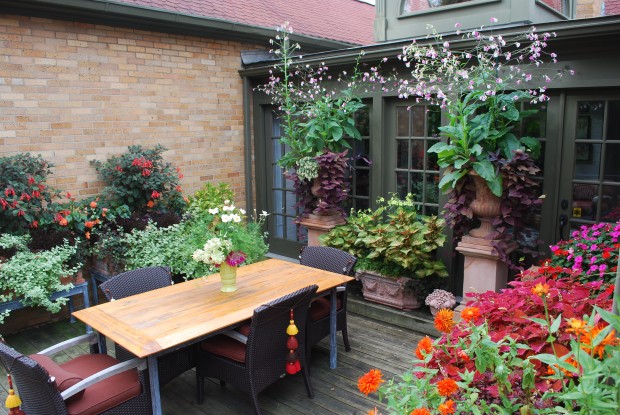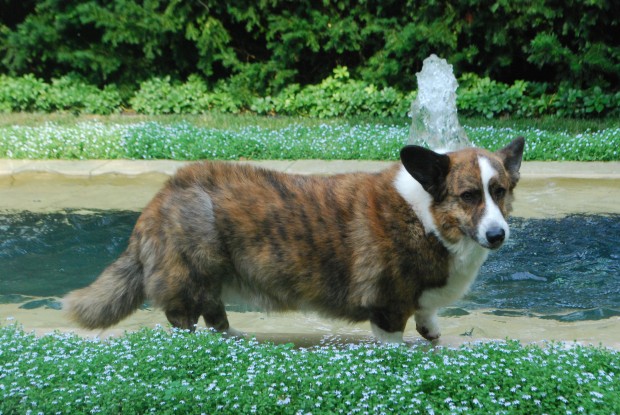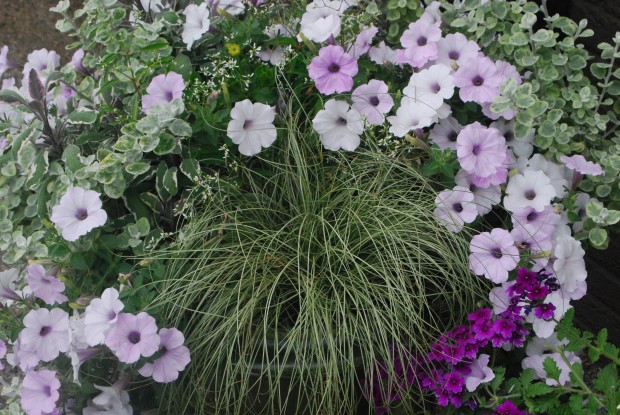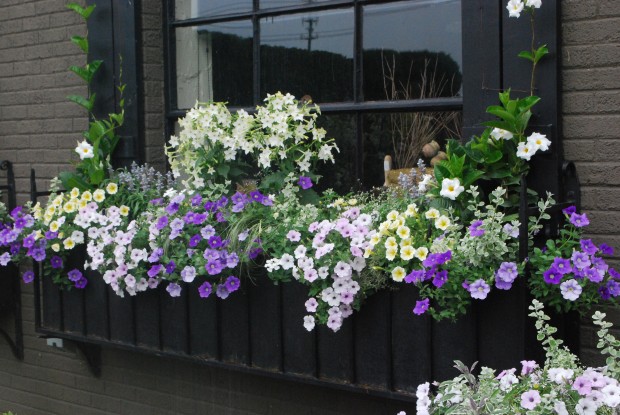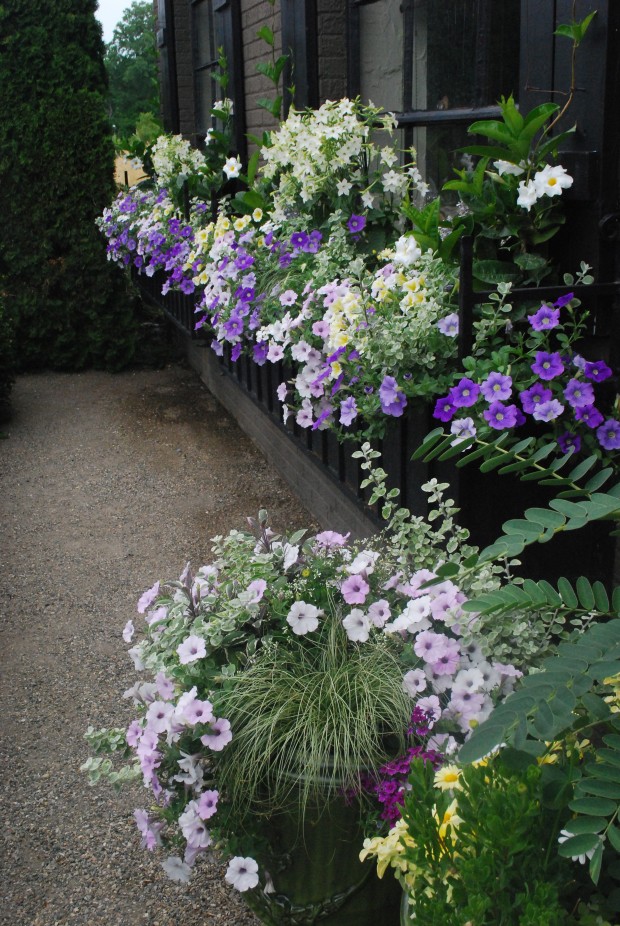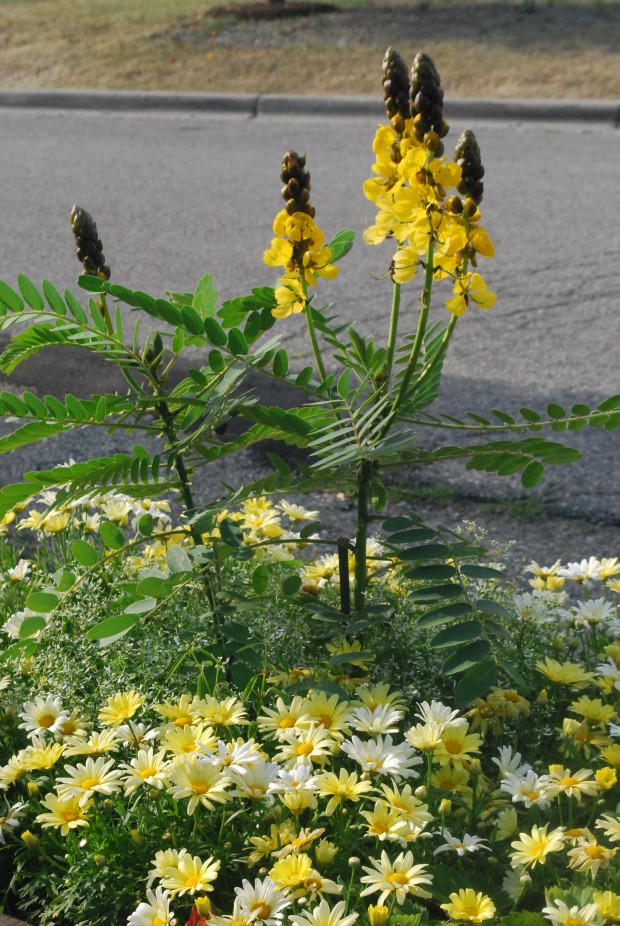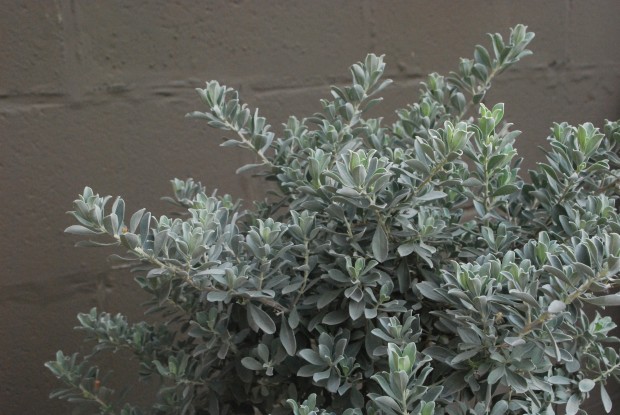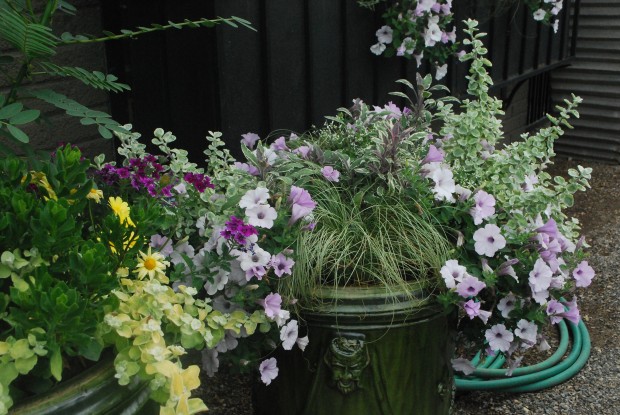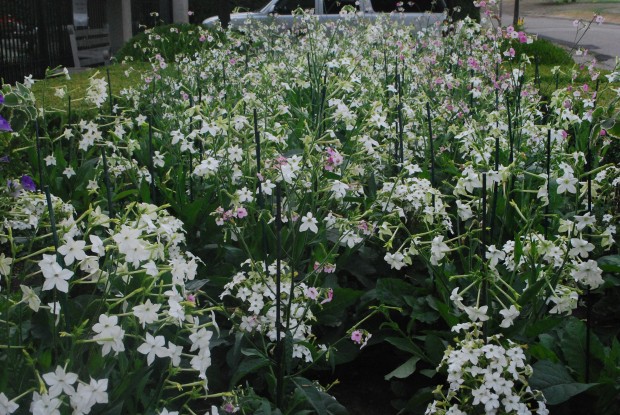I I have planted many a white annual or perennial garden for a client. White and summer-made for each other. White reflects heat and light. It looks cool and crisp in the hottest weather. Anything white looks freshing. Too sophisticated for sweat. These boxwood spheres got a little dress up from some Lamium White Nancy and white petunias. I am sure there are those who would think the pots and spheres are enough to satisfy, but these white tutus manage to make a little fun of the heat.
I have a few clients that want white, and nothing else, in their containers. This year, I applaud their choice. Though I was perspiring to beat the band when I took this picture, I see no signs of stress in this container. I am sure anyone growing white mandevillea this year will be rewarded with strong growth and lots of flowers. They also seen to do well with a little bit of shade. Keep in mind they bloom on new growth, so feed them. It interests me, how weather can affect our perception of color. In a cooler season, white can look chilly and remote. In a very hot year, white provides relief to the eye.
Nicotiana loves cooler weather. To my surprise, my nicotiana at the shop is blooming profusely in our heat. Maybe how careful we are about providing adequate moisture helps.
Susie’s apple espalier has no problem with the heat. The spring blooms were protected from the April frosts such that she has lots of fruit ripening. The white petunias are thriving. Petunias of all types like heat, and soil kept on the dry side. They certainly seem to be the happiest plants in the container. Unlike a lot of white flowering perennials, white petunias are tough and reliable. I do like white echinacea, but I have yet to ever see a stand of them that could compare to the pink cultivars.
I am frankly surprised at our long run of sunny days. Relentless, this year, the sun. I have yet to photograph most of our spring and early summer projects-glaring and bright sun is not so friendly to taking pictures. But these Sonata cosmos and these white petunias handle the sunny glare of this pool deck with aplomb.
There are a number of great white flowering perennials. My favorite-the Becky shasta daisy. So fresh, so willing-so easy to grow. The white phlox David-very good. White echinacea-beautiful, but not so easy to cultivate. White perennial hibiscus-gorgeous, and easy. Cimicifuga racemosa-the white flowering snakeroot tolerates some shade. There are so many cultivars of white astilbe-all of them shine. The white Japanese Anemone Honorine Jobert is a favorite. I like using white foliage plants in white perennial gardens. Brunnera Jack Frost is a good performer, and will tolerate a fair amount of sun. Variegated Solomon’s Seal is as robust as it is elegant.
There are those plants whose silver foliage could pass for white on a bright and sunny day. The vigorously growing Grey Shield plectranthus, a silver trailing artemesia, 4″ pot starts of a white variegated miscanthus, and variegated licorice are a greenish white.
Garden furniture-there is lots out there from which to choose. This contemporary settee upholstered in white cotton duck makes a big statement about summer white. Devilish to keep clean, furniture with white cushions look great in a garden.
This concrete and gravel sellette made in Paris has an incredibly small planting area. I wouls say 8″ by 8″ by 10″ deep. We planted it with drought resistant, and heat loving white plants. Angelonia-bring on the heat. Trailing white verbena and petunias-ditto. The creeping jenny-my client is a gifted waterer. I suspect she gives the jenny a little more water than the rest. Selectively watering plants in a container can produce stellar results. Very few plants wnat exactly the same conditions.
White house. White doors. I might add the white house and doors are impeccably maintained. White limestone. White impatiens and white variegated ivy in the white glazed pots. This is a refreshingly cool look.
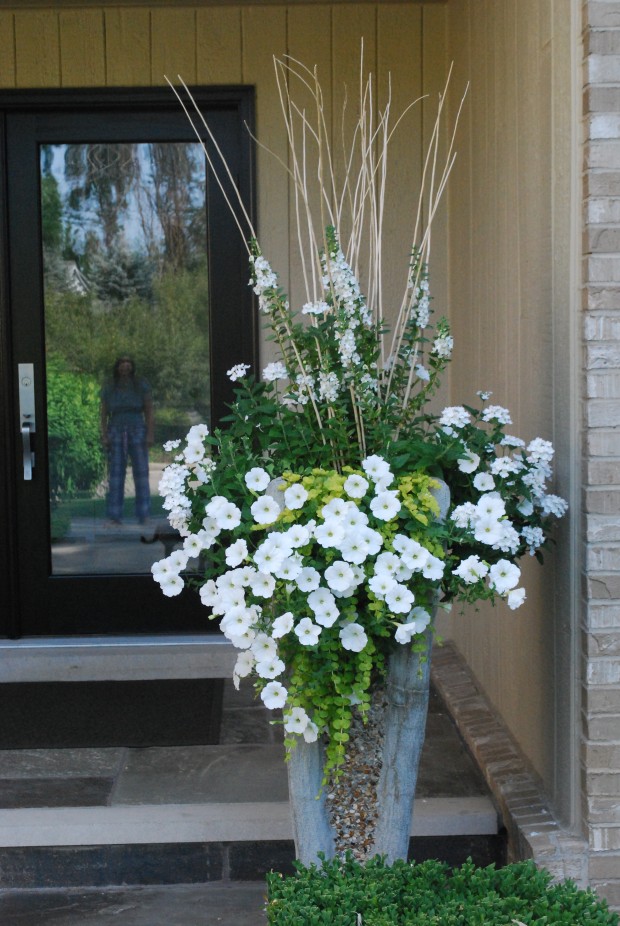
The right hand sellette looks just as good as its companion on the left. The creamy white sticks provide some support to the angelonia. The flowers are all simple and ordinary-the look is smashing.
The nicotiana alata blooming at the shop right now-astonishingly fresh and beautiful-especially the white.
